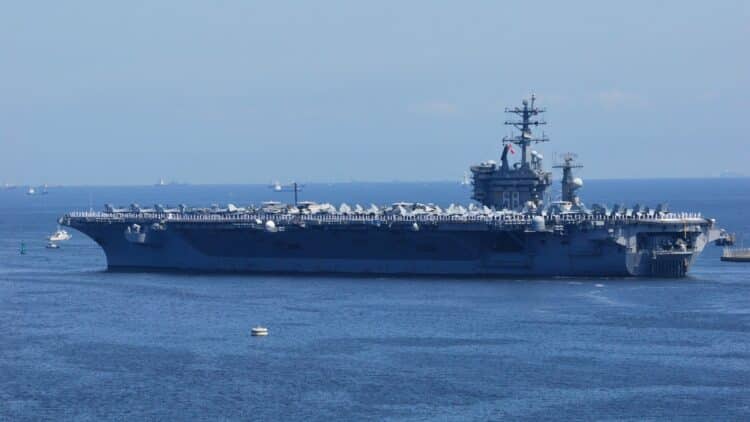Landings are the most dangerous daily routine aboard a military aircraft carrier. Even though they are performed thousands of times without accidents, they remain a high-risk ritual. That is why last Sunday, October 26, 2025, the United States Navy was particularly unlucky: in a span of just 30 minutes, they lost two aircraft of immense value in the depths of the sea. A multi-mission helicopter and a U.S. fighter jet now lie at the bottom of the South China Sea.
Fortunately, a rescue operation was carried out and all the crew members involved (three from the helicopter and two from the fighter jet) were saved safe and sound. However, the rarity of the event continues to fuel controversy: what were the odds of two US aircraft sinking in unrelated incidents in such a short time? Although President Donald Trump publicly intervened to dismiss any idea of “foul play,” this double accident raises serious questions about the maintenance of the former USS Nimitz.
Double loss in the Pacific
The epicenter of the crisis was the USS Nimitz (CVN-68), one of the most legendary and oldest aircraft carriers in the US Navy. The ship, commissioned in 1975, is on its final deployment before being decommissioned and dismantled. In light of recent events, it seems that it should have been retired earlier. The incidents occurred while the aircraft carrier was returning to base after being deployed in the Middle East in response to attacks by the Houthis.
Here is the chronology of events in the South China Sea: At 2:45 p.m. local time, an MH-60R Sea Hawk helicopter (assigned to HSM-73 “Battle Cats” squadron) crashed into the water. Just half an hour later, at 3:15 p.m. local time, an F/A-18F Super Hornet fighter jet from squadron VFA-22 “Fighting Redcocks” crashed. Its two pilots managed to eject successfully before impact. They are now safe and reported to be in stable condition.
The U.S. Navy confirms that both accidents remain under investigation. The fact that the incident occurred in the China Sea only adds another layer of complexity to the whole affair. This is a strategic turning point, where U.S. military operations are always viewed with some suspicion by China.
MH-60R Sea Hawk
This helicopter is not just a simple means of transport; it is the aircraft carrier’s main multi-mission naval helicopter, affectionately nicknamed “Romeo.” It is designed for both anti-submarine warfare (ASW) and anti-surface warfare (ASuW); in other words, it is both a “submarine detector” and a “ship hunter” for the fleet.
Its design is part of the robust UH-60 Black Hawk family, whose basic design dates back to 1974, although this variant was not used until 2006. Its standard crew consists of three people: pilot, co-pilot, and Tactical Sensor Operator. It also reaches a speed of 267 km/h. The Romeo helicopter is equipped with an AN/AQS-22 submersible sonar that is capable of tracking silent threats underwater. In terms of weaponry, it can carry up to three Mk 54 torpedoes and AGM-114 Hellfire air-to-surface missiles.
This helicopter is so reliable that it has been sold to other allied navies: Australia, Denmark, India, and Saudi Arabia have purchased it. Even the Spanish Navy is in the process of acquiring the “Romeo” for its future operations, replacing older models.
F/A-18F Super Hornet
The other victim of the double accident is the F/A-18F Super Hornet. This is a multi-role, two-seat fighter/attack aircraft designed for carrier-based operations. This version has two seats, designed to carry a pilot and a weapons systems officer (WSO).
The original Hornet (its predecessor) first flew in the 1970s. This generation of Super Hornet (E/F) is much younger: its first flight took place in 1995, entering service with the US Navy in 1999. It is powered by two powerful General Electric F414 engines that allow it to reach a maximum speed of Mach 1.6—enabling it to break the sound barrier.
In addition, it has the unique ability to act as an aerial tanker, refueling other aircraft in flight.

